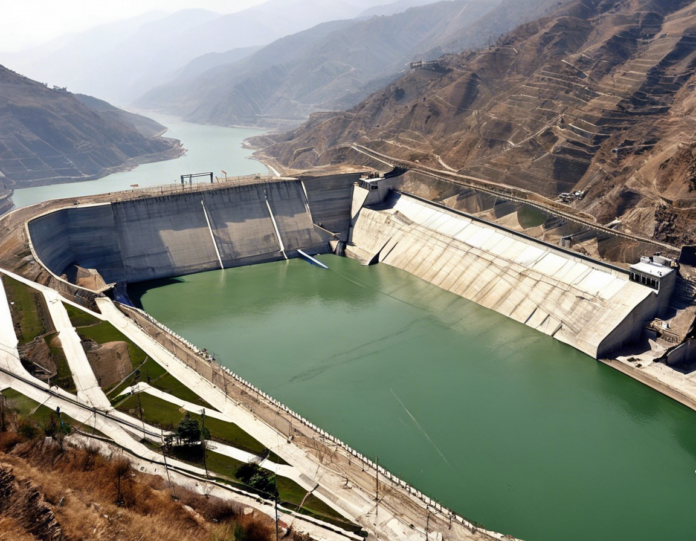Nestled in the serene Himalayan foothills of India lies the Tehri Dam, a monumental engineering marvel that stands as a testament to human ingenuity and persistence. Completed in 2006, the dam is one of the tallest embankment dams in the world and a crucial source of hydroelectric power for the region. Let’s delve into the depths of this extraordinary structure to understand its significance, construction, and impact on the environment and society.
The Genesis of Tehri Dam
Tehri Dam is situated on the Bhagirathi River near the town of Tehri in the northern state of Uttarakhand, India. The project was envisioned as early as 1961 to harness the waters of the Ganges and its tributaries for irrigation, hydroelectric power generation, and flood control. After years of planning and deliberation, construction on the dam began in 1978 and was completed in several phases over the next three decades.
Structure and Design
The Tehri Dam is an earth-filled embankment dam, standing at an impressive height of 260.5 meters (855 feet). Its reservoir, known as the Tehri Lake, has a storage capacity of over 2.6 billion cubic meters of water, making it one of the largest reservoirs in India. The dam’s core is made of roller-compacted concrete, while the outer layers consist of rock, earth, and other locally sourced materials.
The dam’s design incorporates multiple spillways, including radial gates and a tunnel, to manage water flow and prevent overflow during periods of heavy rainfall or snowmelt. The power station at the base of the dam houses four 250-megawatt turbines, generating a total capacity of 1,000 megawatts of electricity. This clean and renewable energy source plays a crucial role in meeting the power demands of northern India.
Environmental and Social Impact
Despite its numerous benefits, the construction of Tehri Dam has not been without controversy. The project required the submergence of several villages and the displacement of thousands of residents, leading to concerns about the loss of livelihoods and cultural heritage. Environmentalists have also raised alarms about the impact of damming the Bhagirathi River on the local ecosystem and aquatic life.
Efforts have been made to mitigate these issues through resettlement programs, environmental monitoring, and the promotion of sustainable development practices in the region. The dam has also helped in reducing the risk of floods downstream and providing water for irrigation, benefiting agriculture and improving the overall socio-economic conditions of the area.
Future Prospects and Challenges
As India continues to grapple with the growing demand for energy and water resources, the Tehri Dam stands as a crucial asset in the country’s infrastructure. Plans are underway to expand the dam’s capacity and optimize its efficiency to meet the evolving needs of the region. However, the project also faces challenges such as siltation, seismic risks, and the need for continued community engagement and support.
In conclusion, the Tehri Dam symbolizes human ambition and resilience in conquering nature’s forces for the greater good. It serves as a reminder of the delicate balance between progress and conservation, urging us to tread carefully as we harness the power of water for our development. As we marvel at this engineering feat, let us also reflect on the responsibilities that come with altering the course of rivers and reshaping landscapes for generations to come.
Frequently Asked Questions (FAQs)
1. What is the purpose of Tehri Dam?
Answer: Tehri Dam serves multiple purposes, including hydroelectric power generation, irrigation, flood control, and water supply for domestic and industrial use.
2. How tall is Tehri Dam?
Answer: Tehri Dam stands at a height of 260.5 meters (855 feet), making it one of the tallest embankment dams in the world.
3. What is the capacity of Tehri Dam’s reservoir?
Answer: The Tehri Lake reservoir has a storage capacity of over 2.6 billion cubic meters of water.
4. How many turbines are there in the power station at Tehri Dam?
Answer: The power station at Tehri Dam houses four 250-megawatt turbines, with a total generating capacity of 1,000 megawatts.
5. What are some of the environmental concerns associated with Tehri Dam?
Answer: Environmental concerns include the submergence of villages, displacement of residents, impact on aquatic life, and siltation of the reservoir.
6. How has Tehri Dam benefited the region?
Answer: Tehri Dam has provided clean and renewable energy, reduced the risk of floods downstream, improved water availability for irrigation, and contributed to the socio-economic development of the region.
7. Are there any plans to expand Tehri Dam in the future?
Answer: Yes, there are plans to expand Tehri Dam’s capacity and optimize its efficiency to meet the growing energy and water demands of the region.
8. What measures have been taken to address the social impact of Tehri Dam?
Answer: Resettlement programs, environmental monitoring, and sustainable development initiatives have been implemented to mitigate the social impact of Tehri Dam.
9. How does Tehri Dam contribute to India’s energy security?
Answer: Tehri Dam plays a crucial role in meeting India’s energy needs by providing clean and renewable hydroelectric power to the northern region.
10. What lessons can be learned from the construction of Tehri Dam?
Answer: The construction of Tehri Dam highlights the importance of balancing development with environmental and social considerations, emphasizing the need for sustainable practices in large-scale infrastructure projects.

